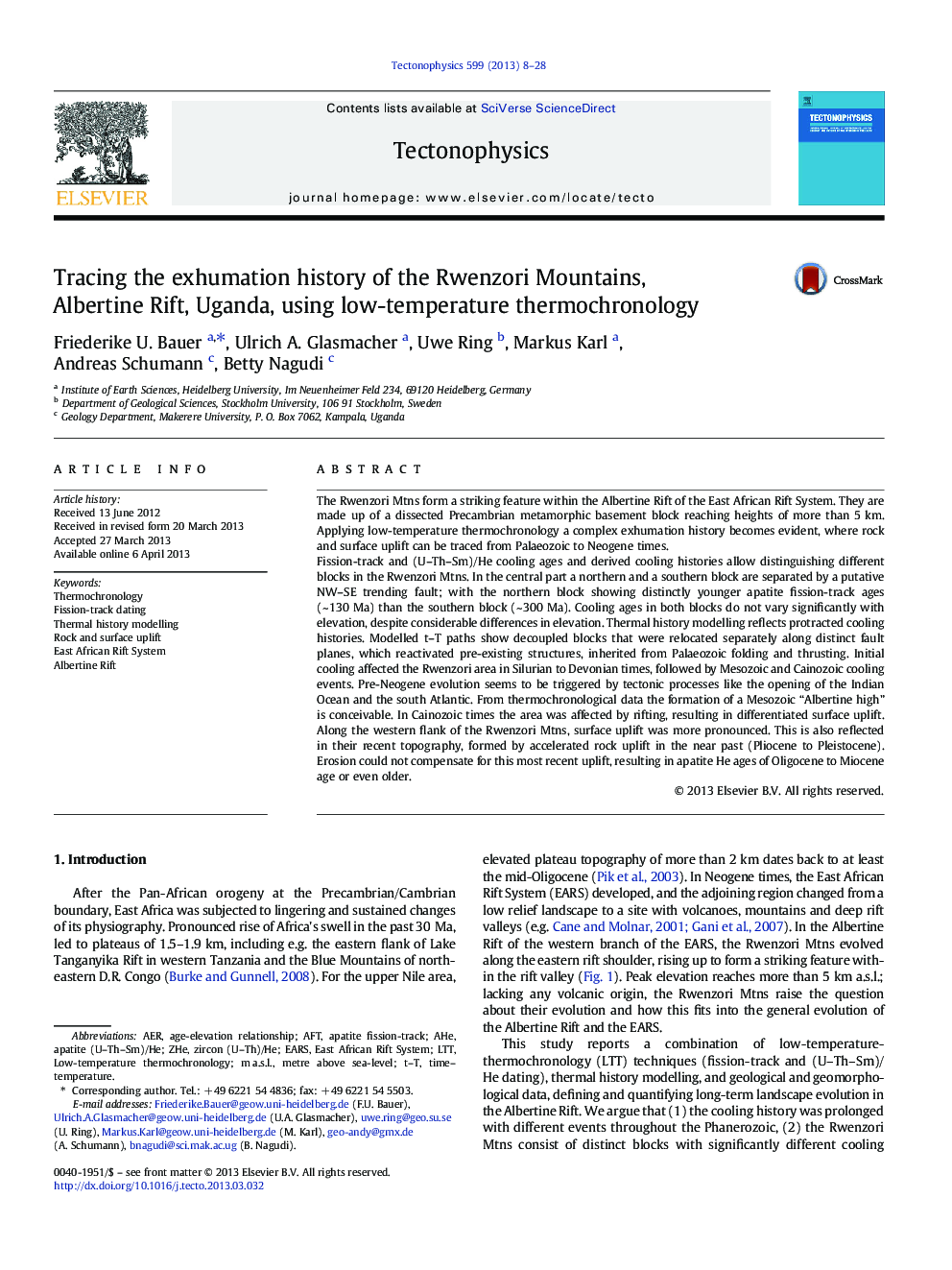| کد مقاله | کد نشریه | سال انتشار | مقاله انگلیسی | نسخه تمام متن |
|---|---|---|---|---|
| 4692335 | 1636788 | 2013 | 21 صفحه PDF | دانلود رایگان |
• Several cooling events affected the Rwenzori area since Palaeozoic times.
• The Rwenzoris show distinct decoupled blocks with diverging exhumation histories.
• Rwenzori evolution and surface uplift was not solely triggered by Neogene rifting.
• Neogene rock uplift outweighed erosion, resulting in the recent high topography.
The Rwenzori Mtns form a striking feature within the Albertine Rift of the East African Rift System. They are made up of a dissected Precambrian metamorphic basement block reaching heights of more than 5 km. Applying low-temperature thermochronology a complex exhumation history becomes evident, where rock and surface uplift can be traced from Palaeozoic to Neogene times.Fission-track and (U–Th–Sm)/He cooling ages and derived cooling histories allow distinguishing different blocks in the Rwenzori Mtns. In the central part a northern and a southern block are separated by a putative NW–SE trending fault; with the northern block showing distinctly younger apatite fission-track ages (~ 130 Ma) than the southern block (~ 300 Ma). Cooling ages in both blocks do not vary significantly with elevation, despite considerable differences in elevation. Thermal history modelling reflects protracted cooling histories. Modelled t–T paths show decoupled blocks that were relocated separately along distinct fault planes, which reactivated pre-existing structures, inherited from Palaeozoic folding and thrusting. Initial cooling affected the Rwenzori area in Silurian to Devonian times, followed by Mesozoic and Cainozoic cooling events. Pre-Neogene evolution seems to be triggered by tectonic processes like the opening of the Indian Ocean and the south Atlantic. From thermochronological data the formation of a Mesozoic “Albertine high” is conceivable. In Cainozoic times the area was affected by rifting, resulting in differentiated surface uplift. Along the western flank of the Rwenzori Mtns, surface uplift was more pronounced. This is also reflected in their recent topography, formed by accelerated rock uplift in the near past (Pliocene to Pleistocene). Erosion could not compensate for this most recent uplift, resulting in apatite He ages of Oligocene to Miocene age or even older.
Journal: Tectonophysics - Volume 599, 25 June 2013, Pages 8–28
